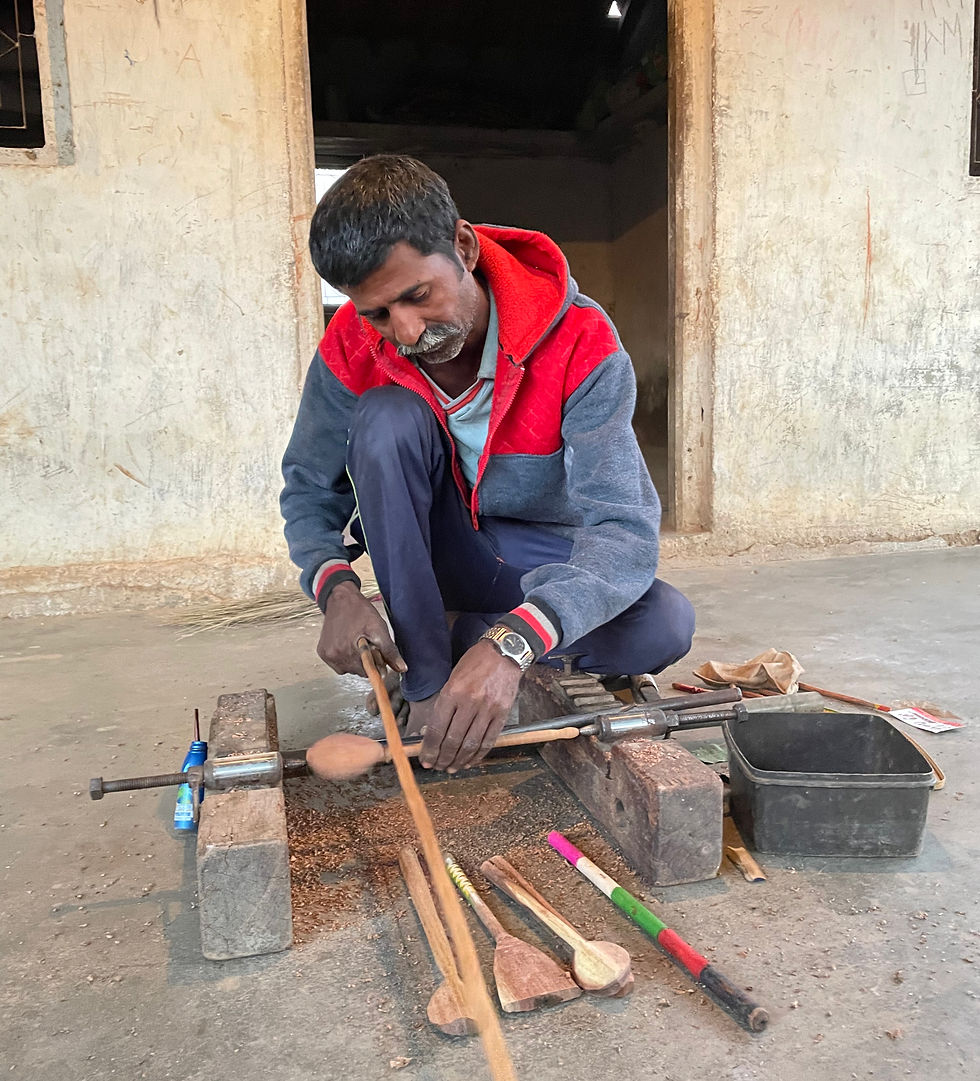Uncovered Stories - Kochi Fishermen
- Siân Warren
- Dec 22, 2024
- 2 min read
Updated: Jan 5
For me, curating travel is about weaving stories and connecting people across cultures. To share deeper insight into this, I am documenting many of the stories I encounter during my travels across India. These mini narratives and photographs are part of the series known as 'Uncovered Stories'
October 2024, Fort Kochi
During a recent visit to Fort Kochi, I spent some time chatting with people at the fish market by the harbour. This is a spot most visitors pass through - taking a few photos before moving on - and I had done the same in the past. This time, however, I decided to delve deeper and learn more about the lives of those who work at the market and the iconic Chinese fishing nets.
As I strolled through the market, asking questions, I was kindly invited onto one of the fishing nets by a fisherman named Joseph. Standing at the edge of the net, he explained that each net typically requires six men to operate, and they lower it into the water up to 200 times a day. While some nets are now equipped with motorised winches, Joseph and his team still rely on traditional manual labour.

Photo @ Sian Warren
Joseph and the other fishermen demonstrated how the net is lowered, usually left in the water for 10–15 minutes. For my benefit, they shortened the time to just five minutes, and in that brief period, they caught a single white mullet. He shared that June and July are the most abundant months for fishing, but the job has become increasingly challenging in recent years.
One major challenge is the invasive water hyacinth, which has overrun Kerala’s backwaters. The thick, green mats of this fast-growing plant make it difficult to lower the nets, especially during the hotter months when the hyacinth completely takes over. Its presence not only complicates fishing but also affects fish populations, further straining the fishermen’s livelihoods. Many, like Joseph, are now contemplating seeking work abroad in the Gulf to sustain their families.
Water hyacinth is a remarkably fast-spreading plant capable of cloning itself rapidly. Within just two weeks, it can blanket entire lakes and rivers, wreaking havoc on ecosystems. It displaces native aquatic plants, reduces fish populations, and releases pollutants into the water as it decays, further impacting the delicate balance of life in these waters.

Photo @ Sian Warren

Photo @ Sian Warren

Photo @ Sian Warren




Comments